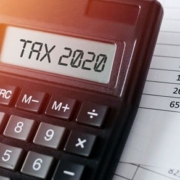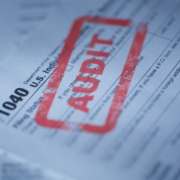The Standard Business Mileage Rate Increased for 2022!
- Learn about the increased standard business mileage rate increase for 2022.
- Find out how the cents-per-mile rate can help if you don’t want to keep track of actual expenses.
- Learn how the IRS calculates the standard business mileage rate.
- Find out when businesses cannot use the cents-per-mile method.
After two years of no increases, the optional standard business mileage rate used to calculate the deductible cost of operating an automobile for business has gone up in 2022 by 2.5 cents per mile. The IRS recently announced that the cents-per-mile rate for the business use of a car, van, pickup or panel truck is now 58.5 cents (up from 56 cents for 2021).
The increased tax deduction partly reflects the price of gasoline. On December 21, 2021, the national average price of a gallon of regular gas equalled $3.29, compared with $2.22 a year earlier, according to AAA Gas Prices. Fiducial has more about what this rate increase could mean for you!

Don’t want to keep track of actual expenses?
Businesses can generally deduct the actual expenses attributable to business use of vehicles. This includes gas, oil, tires, insurance, repairs, licenses, and vehicle registration fees. In addition, you can claim a depreciation allowance for the vehicle. However, in many cases, certain limits apply to depreciation write-offs on vehicles that don’t apply to other types of business assets.
The cents-per-mile rate is beneficial if you don’t want to keep track of actual vehicle-related expenses. With this method, you don’t have to account for all your actual expenses. However, you still must record certain information, such as the mileage for each business trip, the date, and the destination.
Using the cents-per-mile rate is also popular with businesses that reimburse employees for business use of their personal vehicles. These reimbursements can help attract and retain employees who drive their personal vehicles a great deal for business purposes. Why? Under current law, employees can’t deduct unreimbursed employee business expenses, such as business mileage, on their own income tax returns.
Do you use the cents-per-mile rate? Then keep in mind that you must comply with various rules. If you don’t comply, the reimbursements could be considered taxable wages to the employees.
How is the standard business mileage rate calculated?
The IRS adjusts the standard business mileage rate annually. It’s based on an annual study commissioned by the IRS about the fixed and variable costs of operating a vehicle. These fixed and variable costs include gas, maintenance, repair, and depreciation. Occasionally, if there’s a substantial change in average gas prices, the IRS will change the cents-per-mile rate midyear.
When can the cents-per-mile method not be used?
There are some cases when you can’t use the cents-per-mile rate. It partly depends on how you’ve claimed deductions for the same vehicle in the past. In other situations, it depends on if the vehicle is new to your business this year or whether you want to take advantage of certain first-year depreciation tax breaks on it.
As you can see, there are many factors to consider in deciding whether to use the standard mileage rate to deduct vehicle expenses. Have questions about tracking and claiming such expenses in 2022 — or claiming 2021 expenses on your 2021 income tax return? Call Fiducial at 1-866-FIDUCIAL or make an appointment at one of our office locations to discuss your situation.
Ready to book an appointment now? Click here. Know someone who might need our services? We love referrals!
For more small business COVID-19 resources, visit Fiducial’s Coronavirus Update Center to find information on SBA loans, tax updates, the Paycheck Protection Program, paid sick and family leave.









